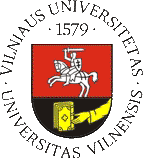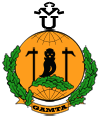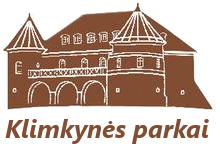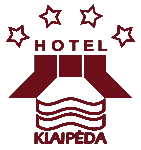Excursions: Day excursion
9th of March (9-14pm.) Excursion: Sudervė–Dūkštai–Kernavė–Trakai–Vilnius
1. Stop - Sudervė
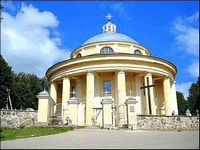
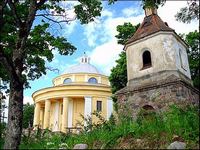
Sudervė is a village located 16 km to the northwest from Vilnius, near Vilnojas lake, in Švencionys region. Here is unique church, build in XIX (1822) century by the famous architect, Vilnius university professor Laurynas Stuoka-Gucevičius project. This church is located on the highest top of the village, so that’s why you could see it, before coming to the village down the road.
First church in this place was build in 1594, named “saint Peter and Paulius” church. In 1820 was burnt down. Inside the church there is XIX century organ, 2 saint Maria and Jesus pictures.a), with the cupola, column’s, which show’s the classicism architecture style. After the columns there is 4 sculptures of the evangelist’s – saint Luuk, Matheus, Morcus and John, created by Ignotas Gulmanas. Over the next side there is cemetery, and a belfry (built in 1929) on the right, with XIX century bells.
2. Stop - Dūkštu oak-wood
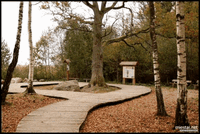
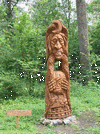
If you want to see how the Lithuanian ancient forests looked like, visit Dūkštos oak-wood. You will find this unique forest by driving from Vilnius to Kernavė, at about 1 km beyond the town of Dūkštos. The foresters of Vilnius Forest Enterprise, understanding the importance of this oak-wood and wishing to present the values of Dūkštos oak-wood to the public, cooperating with the Directorate of the Neris Regional Park, have set out the cognitive walkway. It is all adapted to the disabled (wooden board cover), children, and elderly visitors, there is a possibility to go along shorter circular segments. By the cognitive walkway of Dūkštos oak-wood, there are more than 38 sculptures, representing characters from Lithuanian legends and mythology.
At one time similar oak-woods sighed in all Lithuania. Our ancestors respected oaks, believed in their extraordinary powers and in the periodic life succession. It was believed that in a tree, the souls of ancestors lived. This belief, carefully transferred from one generation to the other, still exists in our customs. So far we have felt a great respect and affection for trees, a forest, and maybe therefore a hand sometimes trembles before cutting an oak … Today oak-woods in Lithuania make only about 1,5% of the forests. Dūkštos oak-wood is unique because it is one of the greatest and oldest natural oak-woods survived up to now in Lithuania. It covers the area of even 302 ha. The age of the oaks is 180 – 200 years.
In 1863, there was a rebels’ headquarters established here. There is a huge boulder with symbols, which have not been read so far, at the edge of the oak-wood. The inscription is carved clearly and is 70 cm in length. The place, where there is the stone with the symbols, is similar to places chosen for altars in ancient times. Old oaks grow around; there was a wetland with springs nearby. In the times of Christianity, on the western side of the boulder there is an equilateral cross carved. It is narrated that money was dug under the boulder. Many people tried to dig, to search from all its sides. Some people believe that the boulder helps the dreams come true. The mystic environment of the oak-wood has inspired the authors of the film “Herkus Mantas”, and a part of the film scenes was filmed here.
3. Stop - Kernavė
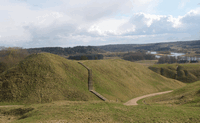

Kernavė is a small town in the southeast of Lithuania, in the municipality of Širvintos (38 km from Vilnius). Only about 300 inhabitants live in Kernavė, but it is the center of township, has its flag, coat of arms and a very rich history.
It is believed, that first inhabitants settled in Kernavė territory in Paleolithic era (9-8 millennium BC), but only in the first centuries AD they started to form bigger settlements in the Pajauta valley (Kernavė territory). Settlements were protected by five fortified mounds. In the 19th century the mounds were named Pilies (castle) mountain, Aukuro (altar) mountain, Mindaugas mountain, Lizdeika mountain and Kriveikiškio mound. In the 13th century Kernavė was already known as merchants’ and craftsmen’s town, and it became one of the most important centre while forming Lithuanian state. In the prosperity times, Kernavė had 3-4 thousands of inhabitants (ten times more, then now). Kernavė, was the first medieval capital of the Grand Duchy of Lithuania.
The town was first mentioned in 1279, when, as the capital of the Grand Duke Traidenis, it was besieged by the Teutonic Knights. In 1390, the knights burned the town and its buildings in the Pajauta valley, including the castle. After this raid, the town wasn't rebuilt, and the remaining residents moved to the top of the hill instead of staying in the valley. In later years, the remains of city were covered with an alluvium earth layer, that formed wet peat. It preserved most of the relics intact, and it is a treasure trove for archaeologists, leading some to call Kernavė the "Troy of Lithuania".
In the year 1989 the National Kernavė archaeological and history museum-reserve was found to protect the cultural heritage. A Lithuanian state cultural reserve was established in Kernavė in 2003. In 2004 Kernave was included into UNESCO world heritage list. Reservation territory is 194,4 ha.
4. Stop - Trakai
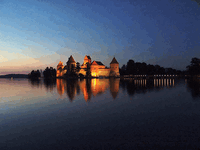
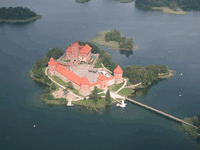
Trakai is a historic city and lake resort, situated between three lakes. It lies 28 km west of Vilnius. Because of its proximity to Vilnius, Trakai is a popular tourist destination. Trakai is the administrative centre of Trakai district municipality. The town covers 11 52 km˛ of area, is inhabited by 5 406 people. A distinctive feature of Trakai is that the town was built and preserved by people of different nationalities. Communities of Karaims, Tatars, Lithuanians, Russians, Jews and Poles lived here side by side.
Name of the town is known since 1337 as first recorded in chronicles as German: Tracken, later German: Traken; it is a derivative from the Lithuanian word trakai (singular: trakas meaning a glade in English). Since the Polish-Lithuanian Commonwealth, the city was referred to as Troki in Polish.
Trakai is a town built on water. The town is surrounded by the lakes of Luka (Bernardinai), Totoriškės, Galvė, Akmena, Gilušis. There are a number of architectural, cultural and historical monuments in Trakai. The history museum in the castle was established in 1962. Festivals and concerts take place in the island castle in summer.
There are 200 lakes in the region, of which the deepest (46.7 m) is Galvė with its 21 islands. There are Trakai Historical National Park and Aukštadvaris Regional Park founded in the territory of the region.
Trakai Historical National Park was founded in 1991 to preserve Trakai as a centre of Lithuanian statehood as well as its authentic nature. It is the only historical national park not only in Lithuania but also throughout Europe.


